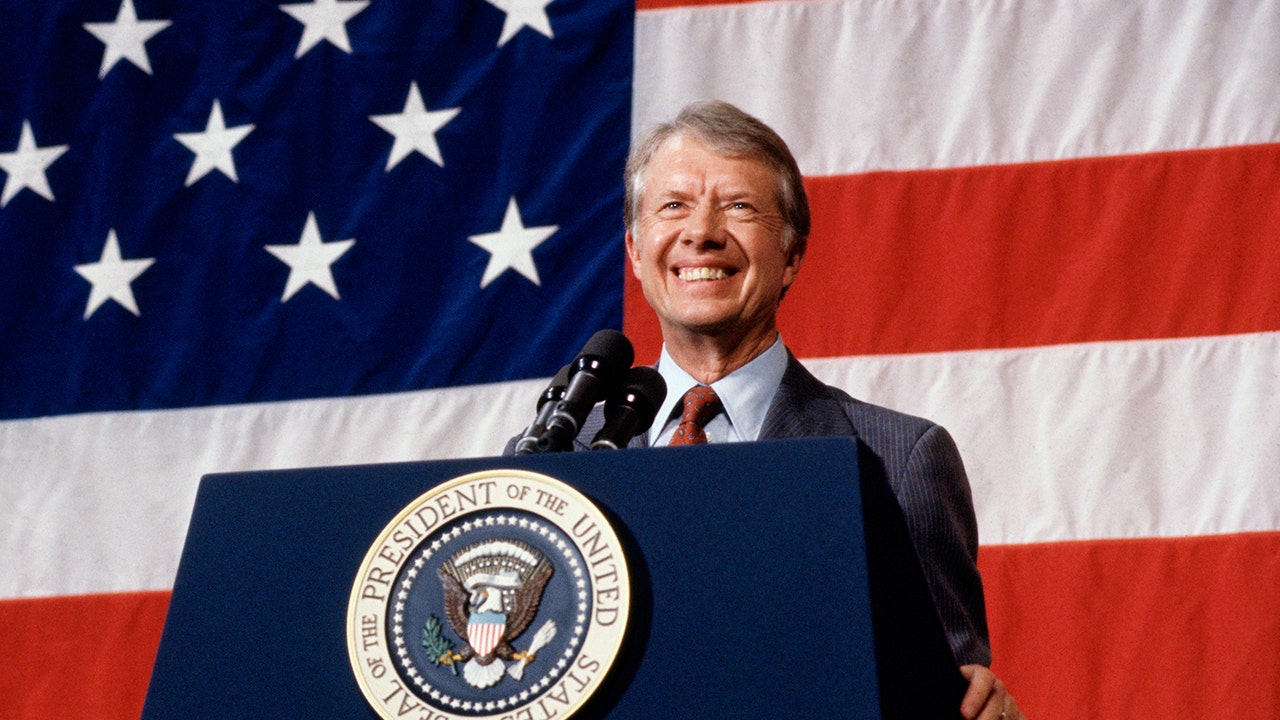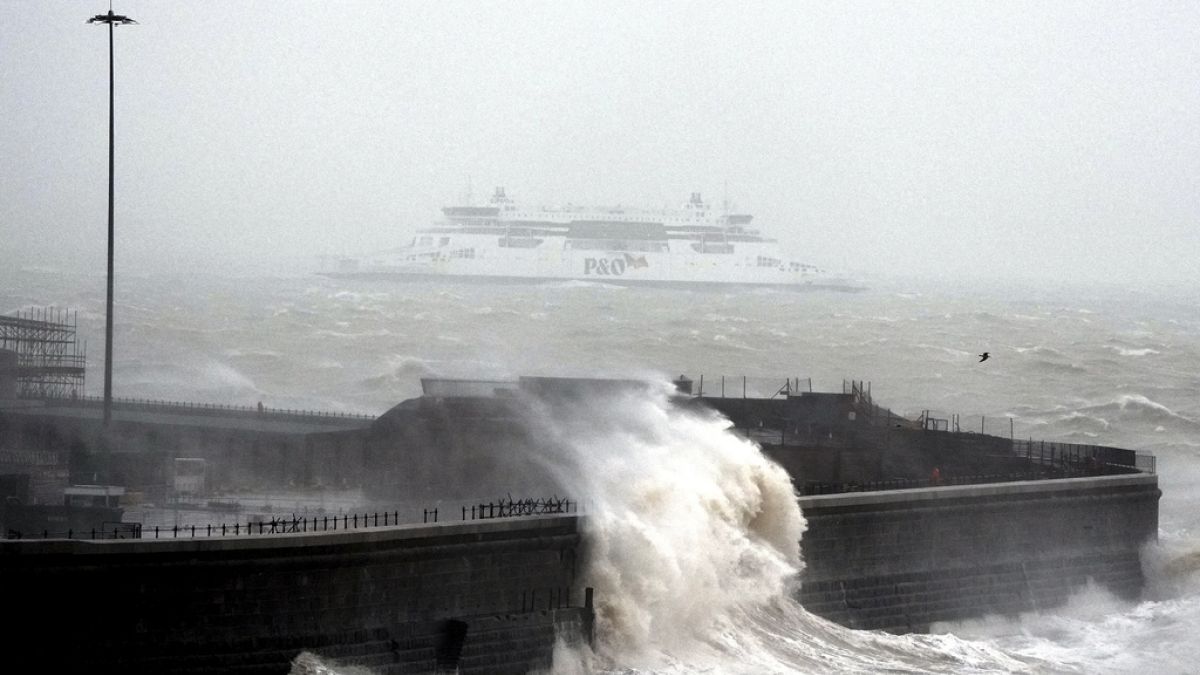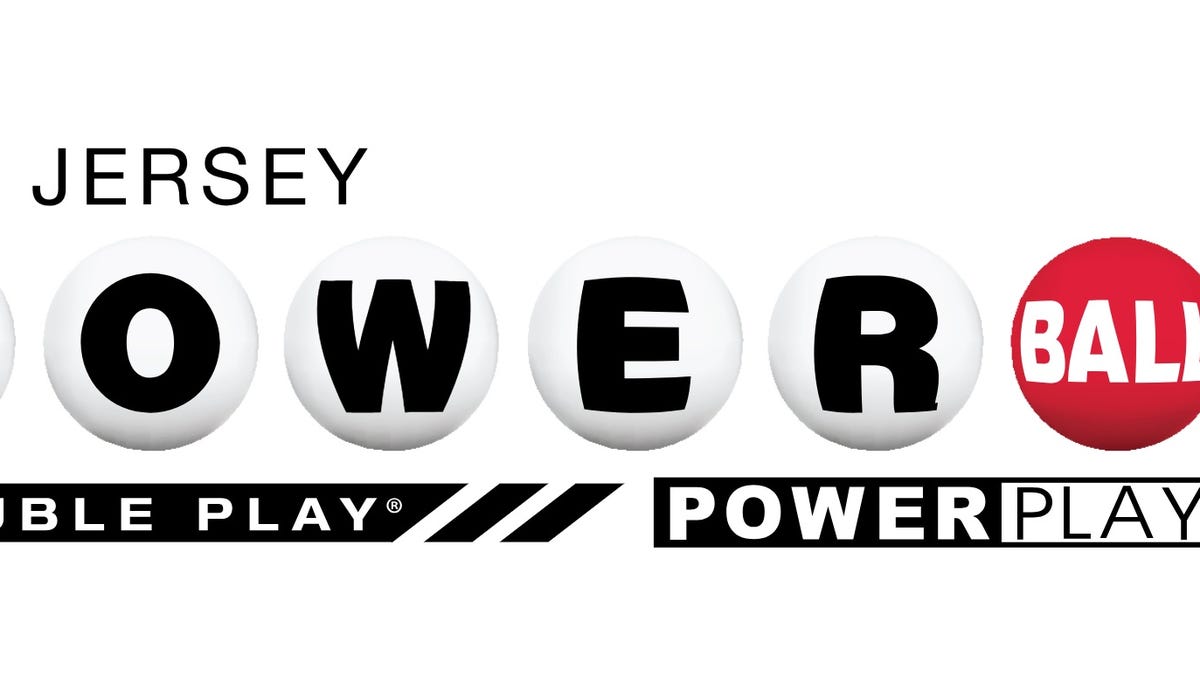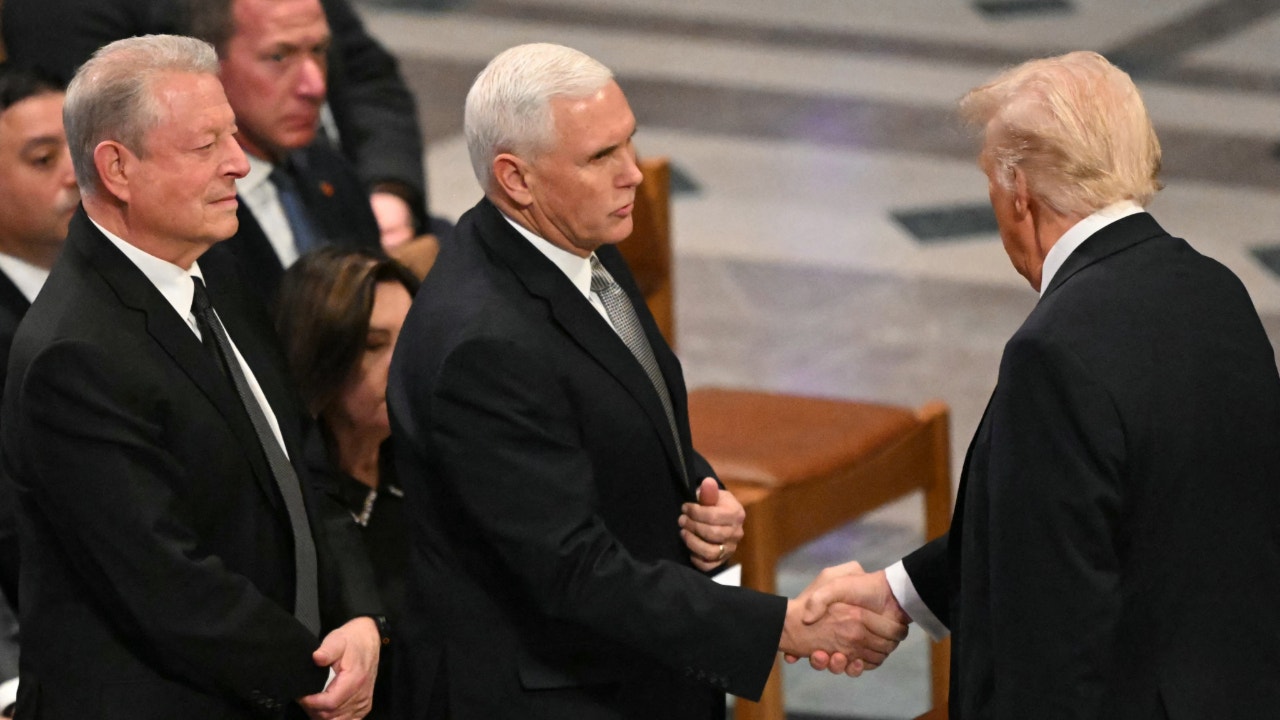Business
Column: Elon Musk is suing to stop the government from enforcing labor laws. The Supreme Court might agree with him

Few business leaders have taken to heart more than Elon Musk the old lawyer’s saw that if you don’t have the facts or the law on your side at trial, pound the table.
Musk has truculently flouted regulatory standards of all varieties as the guiding spirit of companies such as Twitter, Tesla and SpaceX — keeping factories open despite pandemic shutdown orders, allegedly committing securities fraud by issuing misleading tweets about his investment plans and ignoring government safety recommendations for self-driving automotive technologies.
As I’ve reported, Musk has gotten his way with regulators and municipal officials “through bluster and intimidation.”
This is an effort by a group of lawyers who are foes of the administrative state and the New Deal-era legislation that created the NLRB and the SEC to essentially end enforcement of those statutes.
— Catherine Fisk, UC Berkeley
Now he’s trying what may be his most audacious flip-off to regulators yet:
Faced with an accusation by the National Labor Relations Board that SpaceX improperly fired nine employees in 2022, among other illegal acts, the company, which is controlled by Musk, filed a lawsuit in federal court in Texas to declare the NLRB’s action — indeed, the board itself — unconstitutional.
There’s more to it than that, however. The SpaceX lawsuit takes direct aim at the very enforcement structure of the NLRB, through which appointed administrative law judges weigh unfair labor practice charges laid against employers and recommend penalties to be imposed by the board itself.
The company’s argument is that because the judges are largely immune from being fired other than “for good cause,” their role in enforcement deprives accused parties of their constitutional right to trial by jury.
It also asserts that the board’s power to act as judge and jury in employment cases and the members’ immunity from being removed by the president violates the separation of powers principle in the Constitution. In sum, SpaceX claims that it’s being held “subject to unlawful proceedings before an unconstitutionally structured agency.”
More such claims are in the offing from businesses facing regulatory scrutiny. According to a transcript obtained by Bloomberg, grocery chain Trader Joe’s made the same argument at a Jan. 16 NLRB hearing on charges that it engaged in illegal union-busting by retaliating against unionization advocates among its workers.
What are these companies up to? The SpaceX claims are unusual, but they’re not unique in recent regulatory litigation. Similar claims have been brought against the Securities and Exchange Commission and the Consumer Financial Protection Bureau.
“This is an effort by a group of lawyers who are foes of the administrative state and the New Deal-era legislation that created the NLRB and the SEC to essentially end enforcement of those statutes,” says Catherine Fisk, an employment and labor law authority at UC Berkeley law school.
Unable to challenge the laws themselves — they’ve been upheld by Supreme Court decisions dating back to the 1930s — or the regulations directly, Fisk told me, “they’re arguing that the administrative structure is in some part unconstitutional.”
Before delving into the details of the SpaceX lawsuit, let’s examine the NLRB’s enforcement case. The agency says SpaceX illegally fired the nine workers for circulating an open letter complaining about Musk’s “repeated conduct of issuing inappropriate, disparaging, sexually charged comments on Twitter,” which he owns. The silence of SpaceX management about Musk’s conduct, the letter said, allowed a “culture of sexism, harassment and discrimination” to “pervade … the workplace.”
The NLRB filed a formal complaint against SpaceX on Jan. 3, encompassing not only the firings but charges that it illegally interrogated workers and conducted illegal surveillance of their activities. The agency scheduled a hearing on the charges before an administrative law judge for March 5 in Los Angeles.
The very next day, SpaceX filed its lawsuit.
By some measures, SpaceX’s response to the NLRB charges might be interpreted as overkill. Even if it’s found to have committed all the violations, the consequences are meager. The NLRB can’t levy monetary fines.
It can order back pay and reinstatement for workers who have been wrongly discharged, but those wouldn’t make much of a dent in the finances of a company that was reported to have brought in $8 billion in revenue last year from government and commercial contracts.
Moreover, SpaceX hasn’t yet come before an administrative law judge over the NLRB charges, much less having them voted on by the full board. Its lawsuit, then, looks like a shot across the NLRB’s bow. The company asks the trial judge in Texas to block the NLRB’s case against it, declare that the NLRB’s structure is unconstitutional, and permanently prohibit the agency from pursuing unfair labor practice charges via administrative law judges.
That points to the conclusion that this case, and others like it, aim to exploit the veer to the right seen throughout the federal judiciary generally and the Supreme Court in particular.
This variety of attack on regulations went out of fashion in the 1930s, Fisk observes. The Supreme Court, which had overturned a sheaf of New Deal initiatives as well as state minimum wage laws, turned back to the middle in the face of rising public disdain and the court-packing scheme of Franklin Roosevelt.
FDR ultimately abandoned his proposal, but after 1936 the court ceased ruling against the New Deal — upholding the National Labor Relations Act, which created the NLRB, in 1937.
“For 85 years, those arguments weren’t made,” Fisk says, “because lawyers knew that they would get nowhere with them — they might even get sanctioned. The Supreme Court signaled that it was up to Congress to design regulatory structures.”
But today’s Supreme Court isn’t your great-grandfather’s Supreme Court. “The Supreme Court has given lawyers reason to think that they might be able to invalidate part or all of these statutes as being unconstitutional.”
As recently as last week, a majority of justices appeared ready to overturn or at least pare back the so-called Chevron doctrine, the nearly 40-year-old principle that courts should defer to agencies’ interpretations of their governing laws as long as those interpretations aren’t plainly unreasonable.
Overturning the doctrine, as industry litigants urged the court to do during oral arguments Jan. 17, could sap regulatory agencies’ ability to base their rule-making on expert advice.
Although Congress could theoretically overcome any regulatory problems created by an adverse court ruling by amending the laws in question, that’s not a good bet given the profound dysfunction reigning these days on Capitol Hill. The industries will have achieved their goals for years into the future.
That brings us to Musk’s litigation strategy. SpaceX filed its lawsuit against the NLRB not in Southern California, where the company is headquartered, or Washington, D.C., where the NLRB maintains its main office, but in federal court in Brownsville, Texas, a judicial outpost on the Mexican border. This reflects the practice of filing anti-government lawsuits in remote federal courtrooms in Texas, where plaintiffs have a good chance of drawing a right-wing judge.
On the face of it, that tactic may have failed in this case, because the Brownsville court has two judges, one of whom was appointed by Donald Trump and the other by Barack Obama, and the SpaceX case was assigned to Rolando Olvera, who was Obama’s appointee.
SpaceX, however, is playing a longer game. Any appeal from the Texas federal court would go to the extremely conservative U.S. 5th Circuit Court of Appeals, which I’ve described in the past as “the hackiest of hack-ridden federal courts.”
The New Orleans-based appellate court upheld Texas’ malevolent SB 8 antiabortion law in 2022, for example, after which the Supreme Court allowed the law to go into effect.
Last year it partially endorsed a ruling by federal Judge Matthew Kacsmaryk of Texas narrowing access to the abortion drug mifepristone. Kacsmaryk’s ruling was based on a tendentious and long-abandoned reading of an antique 1873 law, but that was enough for the issue to come before the Supreme Court, which has the case on its docket this year.
More to the point, the 5th Circuit has implicitly endorsed the practice of challenging regulations by taking aim at the constitutionality of regulatory agencies. It did so in a case targeting the Consumer Financial Protection Bureau brought by the payday lending industry, which has long been in the CFPB’s crosshairs.
A 5th Circuit panel composed of three Trump-appointed judges ruled the bureau’s funding mechanism unconstitutional; the government appealed that ruling to the Supreme Court, which heard oral arguments on Oct. 3 but hasn’t yet ruled.
The most important 5th Circuit case from the standpoint of SpaceX and Trader Joe’s, and any other businesses that chose to follow in their wake, is Jarkesy vs. SEC.
That case was brought by a hedge fund operator who was hit with $1 million in fines and penalties for fraud by the Securities and Exchange Commission in 2013. The 5th Circuit ruled against the SEC in 2022, finding that it was an unconstitutional breach of Jarkesy’s right to trial by jury for an administrative judge at the SEC to have ruled on Jarkesy’s crime and imposed the penalties, even though they were later approved by the commission itself.
The government appealed to the Supreme Court, which heard oral arguments on Nov. 30 but hasn’t issued a decision. SpaceX’s position draws closely from the 5th Circuit’s ruling in Jarkesy, which is cited no fewer than 13 times in SpaceX’s 25-page lawsuit.
The NLRB has called foul on SpaceX’s choice of venue, calling the company’s rationale for filing in Brownsville “less than paper thin.” The allegedly unlawful conduct of SpaceX took place entirely at the company’s headquarters in the Southern California enclave of Hawthorne, and nothing actually happened in Texas. The government has asked Olvera to transfer the case to federal court in Los Angeles, but he hasn’t yet ruled.
Put it all together, and the SpaceX lawsuit bears watching.
As I’ve written before, conservative federal judges, many of them appointed by Trump, have the power to move the country to the far right for decades to come, eroding reproductive health care, eviscerating gun control laws and making life more difficult for ordinary Americans depending on the federal government to protect their rights. Elon Musk, pursuing his own personal interests, is urging them to keep at it.

Business
4 Takeaways From the Arguments Before the Supreme Court in the TikTok Case

The Supreme Court on Friday grappled over a law that could determine the fate of TikTok, an enormously popular social media platform that has about 170 million users.
Congress enacted the law out of concern that the app, whose owner is based in China, is susceptible to the influence of the Chinese government and posed a national risk. The measure would effectively ban TikTok from operating in the United States unless its owner, ByteDance, sells it by Jan. 19.
Here are some key takeaways:
The court appeared likely to uphold the law.
While the justices across the ideological spectrum asked tough questions of both sides, the overall tone and thrust appeared to suggest greater skepticism toward the arguments by lawyers for TikTok and its users that the First Amendment barred Congress from enacting the law.
The questioning opened with two conservative members of the court, Justice Clarence Thomas and Chief Justice John G. Roberts Jr., suggesting that it was not TikTok, an American company, but its Chinese parent company, ByteDance, that was directly affected by the law.
Another conservative, Justice Brett M. Kavanaugh, focused on the risk that the Chinese government could use information TikTok is gathering on tens of millions of American teenagers and twentysomethings to eventually “develop spies, turn people, blackmail people” when they grow older and go to work for national security agencies or the military.
Justice Elena Kagan, a liberal, asked why TikTok could not just create or buy another algorithm rather than using ByteDance’s.
And another liberal, Justice Ketanji Brown Jackson, said she believed the law was less about speech than about association. She suggested that barring TikTok from associating with a Chinese company was akin to barring Americans from associating with foreign terrorist groups for national security reasons. (The Supreme Court has upheld that as constitutional.)
Still, several justices were skeptical about a major part of the government’s justification for the law: the risk that China might “covertly” make TikTok manipulate the content shown to Americans or collect user data to achieve its geopolitical aims.
Both Justice Kagan and Justice Neil M. Gorsuch, a conservative, stressed that everybody now knows that China is behind TikTok. They appeared interested in whether the government’s interest in preventing “covert” leveraging of the platform by a foreign adversary could be achieved in a less heavy-handed manner, like appending a label warning users of that risk.
Lawyers for TikTok and for its users argued that the law is unconstitutional.
Two lawyers argued that the law violates the First Amendment: Noel Francisco, representing both TikTok and ByteDance, and Jeffrey Fisher, representing TikTok users. Both suggested that concerns about potential manipulation by the Chinese government of the information American users see on the platform were insufficient to justify the law.
Mr. Francisco contended that the government in a free country “has no valid interest in preventing foreign propaganda” and cannot constitutionally try to keep Americans from being “persuaded by Chinese misinformation.” That is targeting the content of speech, which the First Amendment does not permit, he said.
Mr. Fisher asserted that fears that China might use its control over the platform to promote posts sowing doubts about democracy or pushing pro-China and anti-American views were a weaker justification for interfering in free speech than concerns about foreign terrorism.
“The government just doesn’t get to say ‘national security’ and the case is over,” Mr. Fisher said, adding, “It’s not enough to say ‘national security’ — you have to say ‘what is the real harm?’”
The Biden administration defended Congress’s right to enact the law.
The solicitor general, Elizabeth B. Prelogar, argued that Congress had lawful authority to enact the statute and that it did not violate the First Amendment. She said it was important to recognize that the law leaves speech on TikTok unrestricted once the platform is freed from foreign control.
“All of the same speech that’s happening on TikTok could happen post-divestiture,” she said. “The act doesn’t regulate that at all. So it’s not saying you can’t have pro-China speech, you can’t have anti-American speech. It’s not regulating the algorithm.”
She added: “TikTok, if it were able to do so, could use precisely the same algorithm to display the same content by the same users. All the act is doing is trying to surgically remove the ability of a foreign adversary nation to get our data and to be able to exercise control over the platform.”
The court appears unlikely to wait for Trump.
President-elect Donald J. Trump has asked the Supreme Court to issue an injunction delaying the law from taking effect until after he assumes office on Jan. 20.
Mr. Trump once shared the view that Chinese control of TikTok was an intolerable national security risk, but reversed course around the time he met with a billionaire Republican donor with a stake in its parent company.
If the court does uphold the law, TikTok would effectively be banned in the United States on Jan. 19, Mr. Francisco said. He reiterated a request that the court temporarily pause the law from taking effect to push back that deadline, saying it would “simply buy everybody a little breathing space.” It might be a “different world” for TikTok after Jan. 20, he added.
But there was scant focus by the justices on that idea, suggesting that they did not take it seriously. Mr. Trump’s brief requesting that the court punt the issue past the end of President Biden’s term so he could handle it — signed by his pick to be the next solicitor general, D. John Sauer — was long on rhetoric extolling Mr. Trump, but short on substance.
Business
'We will not be closing.' Amid the fires, employers and employees walk a fine line between work and safety

When Brigitte Tran arrived Wednesday morning at the Rodeo Drive boutique where she works as a sales associate, she was on edge.
Smoke from multiple wildfires raging across Los Angeles County billowed overhead. The luxury shopping corridor usually bustling with tourists appeared a ghost town.
Tran’s co-worker texted their boss to let her know neighboring stores had closed, and described the acrid smoke in the air. But the woman, at home in Orange County, did not seem to grasp their concerns. “We will not be closing unless the mall instructs us to close,” she replied.
Tran, who, fearing professional repercussions, asked that her place of work not be named, grew more anxious as the hours ticked by. Around 3 p.m., she and the two other employees working that day mutinied. They packed up, told the security guard to head home, and locked the doors a few hours before closing time.
As the wildfires have raged across Los Angeles County, choking the air, closing schools and forcing tens of thousands of people to evacuate, employers and employees alike have had to manage a difficult balancing act between work and well being. Some employers responded swiftly to the crisis, shutting down offices and shifting to remote work, providing outdoor workers with masks and other protective equipment, and offering support for employees forced to evacuate. Others have been less adept, clumsy in their communications or wholly unmoved by worker concerns — sparking anger among their ranks as a result.
The fires have underscored the need for companies to have a clear plan in place to respond to emergencies, said Jonathan Porter, a meteorologist at private weather forecaster AccuWeather. The obligation, he said, goes beyond monitoring whether an office is in an evacuation zone. For example, as the current devastation unfolds, businesses should be aware of the “copious amounts of dangerous smoke that’s wafting into the air” and be prepared to provide outdoor workers with quality respirators or move them away from polluted air.
Some employers gave employees flexibility. Snap, the Santa Monica-based creator of the photo messaging app Snapchat, for example, kept its offices open on Wednesday but encouraged employees to work remotely, said a company spokesperson.
Others changed course after fielding criticism.
An announcement by UCLA that the campus would remain open for classes and regular operations on Wednesday drew anger from some instructors and students on social media.
Victor Narro, project director for the UCLA Labor Center and a lecturer on campus, said in a post on X he would ignore UCLA’s mandate and hold an optional class online.
“Students have been up all night panicked about sleeping through evacuation orders, winds still high, branches falling all over Westwood, power outages across city, & our new chancellor (on his 2nd day) thought this should be his first bold call…” wrote Nour Joudah, an assistant professor in UCLA’s Asian American Studies Department, in another X post.
That evening, UCLA changed course as conditions worsened, announcing it would close campus.
On Saturday, UCLA Chancellor Julio Frenk released a statement saying classes would be held remotely for at least another week and campus operations would be curtailed. “We ask for continued flexibility and understanding as we all work through these difficult times,” Frenk wrote.
But for many workers, the chaos of the last few dayshas left them feeling like they are fending for themselves.
Tim Hernandez, a driver with Amazon Flex, an on-demand Uber-like program in which people use their own cars to deliver packages, was assigned a route Tuesday along the Pacific Coast Highway toward Malibu, which was rife with closures.
When he questioned whether making the delivery was safe, he said dispatchers at a Amazon facility in Camarillo brushed him off, leaving him to choose between concerns for his safety and worries that his rating in the Flex app would be hurt if he refused to go. He decided to try to make the deliveries, battling gusts of wind that knocked him over at one point. He lost cell signal, however, and was forced to return to the warehouse without completing the vast majority.
And when he arrived for his shift Tuesday, Alfred Muñoz, 43, an Amazon delivery driver who works out of a warehouse in the City of Industry, said he was handed an N95 mask but given little other instruction.
“It was just kind of business as usual,” Muñoz said.
High package counts and the number of stops on his assigned routes this week have made work even more difficult. On Tuesday, with wind gusts whipping debris around making it difficult to see, he had about 180 stops and 290 packages to deliver. On Thursday, the air thick with smoke and ash, he had more than 300 packages.
He woke up Thursday morning with a bloody nose and a sooty black crust in the corners of his eyes.
In response to a request for comment, Montana MacLachlan, an Amazon spokesperson, said the company was “closely monitoring the wildfires across Southern California and adjusting our operations to keep our employees and those delivering for us safe.”
“If a driver arrives at a delivery location and the conditions are not safe to make a delivery, they are not expected to do so and the driver’s performance will not be impacted,” she said.
At the Brentwood location of popular Italian eatery Jon & Vinny’s, staff complained of headaches and sore throats in a text message group chat. An employee, who asked not to be named fearing retaliation at work, said that on Tuesday, staff huddled around an iPad with a fire map pulled up to keep an eye on the expanding evacuation zone. From the front of the restaurant, they could see the glow of the Palisades fire.
The employee said they were frustrated management kept the restaurant open when the perimeter of the mandatory evacuation zone was just two blocks away. On Wednesday, every server scheduled to work called in to say they were not coming, the employee said.
A spokesperson for Joint Venture Restaurant Group, which owns Jon & Vinny’s, did not immediately respond to a request for comment.
During natural disasters and extreme weather, employers’ choices can sometimes mean life or death, said David Michaels, a professor at the Milken Institute School of Public Health and a former assistant secretary of labor for the Occupational Safety and Health Administration.
He pointed to recent floods from Hurricane Helene that killed several workers at a plastics manufacturer. The tragedy has drawn scrutiny from state investigators, and a wrongful death lawsuit accuses the company of requiring employees to stay on site amid flooding after they requested permission to leave.
“It’s incumbent on employers to ensure the safety of their workers,” Michaels said. “The safety of their employees must take precedence over business concerns.”
Yasha Timenovich, 48, a driver for rideshare app Lyft and food delivery platform DoorDash, is more worried about declining earnings than on-the-job safety. With many restaurants and other businesses closed and would-be customers fleeing the city, he said that rides and deliveries have been slow. Traffic patterns have been strange and unpredictable with families piling into vehicles to flee fires.
Timenovich, who faced an order to evacuate his Hollywood apartment with his fiance and 6-year-old daughter Wednesday night, said he planned to stay with relatives for a few days in San Luis Obispo, where he hopes business will be better.
“I’m going to get out of here because it’s too crazy with these fires,” Timenovich said.
Business
Scott Bessent, Trump’s Billionaire Treasury Pick, Will Shed Assets to Avoid Conflicts

Scott Bessent, the billionaire hedge fund manager whom President-elect Donald J. Trump picked to be his Treasury secretary, plans to divest from dozens of funds, trusts and investments in preparation to become the nation’s top economic policymaker.
Those plans were released on Saturday along with the publication of an ethics agreement and financial disclosures that Mr. Bessent submitted ahead of his Senate confirmation hearing next Thursday.
The documents show the extent of the wealth of Mr. Bessent, whose assets and investments appear to be worth in excess of $700 million. Mr. Bessent was formerly the top investor for the billionaire liberal philanthropist George Soros and has been a major Republican donor and adviser to Mr. Trump.
If confirmed as Treasury secretary, Mr. Bessent, 62, will steer Mr. Trump’s economic agenda of cutting taxes, rolling back regulations and imposing tariffs as he seeks to renegotiate trade deals. He will also play a central role in the Trump administration’s expected embrace of cryptocurrencies such as Bitcoin.
Although Mr. Trump won the election by appealing to working-class voters who have been dogged by high prices, he has turned to wealthy Wall Street investors such as Mr. Bessent and Howard Lutnick, a billionaire banker whom he tapped to be commerce secretary, to lead his economic team. Linda McMahon, another billionaire, has been picked as education secretary, and Elon Musk, the world’s richest man, is leading an unofficial agency known as the Department of Government Efficiency.
In a letter to the Treasury Department’s ethics office, Mr. Bessent outlined the steps he would take to “avoid any actual or apparent conflict of interest in the event that I am confirmed for the position of secretary of the Department of Treasury.”
Mr. Bessent said he would shutter Key Square Capital Management, the investment firm that he founded, and resign from his Bessent-Freeman Family Foundation and from Rockefeller University, where he has been chairman of the investment committee.
The financial disclosure form, which provides ranges for the value of his assets, reveals that Mr. Bessent owns as much as $25 million of farmland in North Dakota, which earns an income from soybean and corn production. He also owns a property in the Bahamas that is worth as much as $25 million. Last November, Mr. Bessent put his historic pink mansion in Charleston, S.C., on the market for $22.5 million.
Mr. Bessent is selling several investments that could pose potential conflicts of interest including a Bitcoin exchange-traded fund; an account that trades the renminbi, China’s currency; and his stake in All Seasons, a conservative publisher. He also has a margin loan, or line of credit, with Goldman Sachs of more than $50 million.
As an investor, Mr. Bessent has long wagered on the rising strength of the dollar and has betted against, or “shorted,” the renminbi, according to a person familiar with Mr. Bessent’s strategy who spoke on condition of anonymity to discuss his portfolio. Mr. Bessent gained notoriety in the 1990s by betting against the British pound and earning his firm, Soros Fund Management, $1 billion. He also made a high-profile bet against the Japanese yen.
Mr. Bessent, who will be overseeing the U.S. Treasury market, holds over $100 million in Treasury bills.
Cabinet officials are required to divest certain holdings and investments to avoid the potential for conflicts of interest. Although this can be an onerous process, it has some potential tax benefits.
The tax code contains a provision that allows securities to be sold and the capital gains tax on such sales deferred if the full proceeds are used to buy Treasury securities and certain money-market funds. The tax continues to be deferred until the securities or money-market funds are sold.
Even while adhering to the ethics guidelines, questions about conflicts of interest can still emerge.
Mr. Trump’s Treasury secretary during his first term, Steven Mnuchin, divested from his Hollywood film production company after joining the administration. However, as he was negotiating a trade deal in 2018 with China — an important market for the U.S. film industry — ethics watchdogs raised questions about whether Mr. Mnuchin had conflicts because he had sold his interest in the company to his wife.
Mr. Bessent was chosen for the Treasury after an internal tussle among Mr. Trump’s aides over the job. Mr. Lutnick, Mr. Trump’s transition team co-chair and the chief executive of Cantor Fitzgerald, made a late pitch to secure the Treasury secretary role for himself before Mr. Trump picked him to be Commerce secretary.
During that fight, which spilled into view, critics of Mr. Bessent circulated documents disparaging his performance as a hedge fund manager.
Mr. Bessent’s most recent hedge fund, Key Square Capital, launched to much fanfare in 2016, garnering $4.5 billion in investor money, including $2 billion from Mr. Soros, but manages much less now. A fund he ran in the early 2000s had a similarly unremarkable performance.
-

 Politics1 week ago
Politics1 week agoNew Orleans attacker had 'remote detonator' for explosives in French Quarter, Biden says
-

 Politics1 week ago
Politics1 week agoCarter's judicial picks reshaped the federal bench across the country
-

 Politics1 week ago
Politics1 week agoWho Are the Recipients of the Presidential Medal of Freedom?
-

 Health6 days ago
Health6 days agoOzempic ‘microdosing’ is the new weight-loss trend: Should you try it?
-

 World1 week ago
World1 week agoSouth Korea extends Boeing 737-800 inspections as Jeju Air wreckage lifted
-
/cdn.vox-cdn.com/uploads/chorus_asset/file/25822586/STK169_ZUCKERBERG_MAGA_STKS491_CVIRGINIA_A.jpg)
/cdn.vox-cdn.com/uploads/chorus_asset/file/25822586/STK169_ZUCKERBERG_MAGA_STKS491_CVIRGINIA_A.jpg) Technology3 days ago
Technology3 days agoMeta is highlighting a splintering global approach to online speech
-

 World1 week ago
World1 week agoWeather warnings as freezing temperatures hit United Kingdom
-

 News1 week ago
News1 week agoSeeking to heal the country, Jimmy Carter pardoned men who evaded the Vietnam War draft















